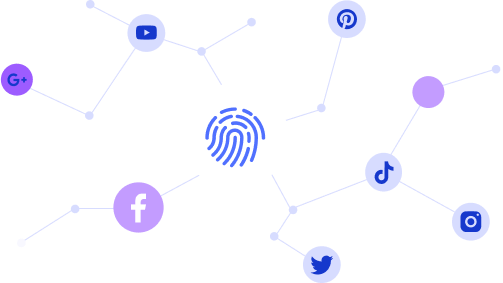ALGORITHMS...One word,diversified application
- Get link
- X
- Other Apps
Algorithms are more simple than we think. From an early age, we are taught how to complete day to day tasks. We learn how to count, sort, walk, tie our shoes, etc.
Step-by-step
When the word algorithm is thrown around it conjures up images of tech startups and binary code. What many of us don’t realize is that algorithms are more simple than we think. Sure, they are used by the tech wizards of the world to build software, but they are also used in everyday life.
From an early age, we are taught how to complete day to day tasks. We learn how to count, sort, walk, tie our shoes, etc. Almost all of these processes are taught to us with a step by step procedure. Essentially, we are learning algorithmic thinking. To break it down, algorithms are a sequence of tasks done in response to an initial situation
A good algorithm maintains a level of correctness while being efficient. Meaning, there is little error and it doesn’t take much time to complete. Another important component is comprehensibility. We wouldn’t be able to use algorithms so frequently if they couldn’t be understood. Algorithmic and computational thinking is so pervasive that it governs the most simple things in our daily lives. Here are some examples of algorithms you interact with everyday.
1. Recipes
Just like sorting papers and even tying your shoes, following a recipe is a type of algorithm. The goal of course being to create a duplicated outcome. In order to complete a recipe you have to follow a given set of steps. Say you are making bread. You need flour, yeast and water. After you have your ingredients you need to combine them in a certain way that will create a predictable outcome, in this case a loaf of bread.
2. Sorting Papers
A simple task and yet it uses algorithmic thinking. When you are sorting office files or your personal documents you are implementing an algorithm. In its most basic sense, you are following a set of tasks to achieve an outcome. The reason why sorting papers is a great example, is because it shows the variety of tasks and specifications algorithms can use. For instance, you can sort your files alphabetically, by word count, by date, and countless others. The goal is to simplify the organizational process by using small tasks.
3. Traffic Signals
The programming implemented in traffic signals considers real-time traffic flow and groups general sets of movements into phases. For instance, traveling through a lane and turning right would be grouped into one phase.
In order to maintain safety, traffic lights need a smart algorithm that detects the phases and times the movement correctly. Every time you pull up to a red light, the traffic signal is cycling through phases. It is using an algorithm to determine the best time for you to continue through the intersection based on traffic volume.
4. Bus Schedules
To map out all of the city bus routes would be a hefty manual task. Therefore, algorithms are used to determine the best routes to save time and fuel. It is also key that the algorithm is able to predict the time it will take for a bus to reach a given pickup point. Public transportation is vital to so many as a means of traveling to work, the grocery store and school. It is so essential that in the United States alone, 34 million times each weekday, people rely on public transportation.
5. GPS
The Global Position System changed the way we approach travel and navigation. It works by pinging satellites and transmitting a unique signal to each one. With these signals, the GPS uses an algorithm to compute the location of a user. This information is implemented by the GPS to map out the distance of a route and travel time. GPS and location tracking is so pervasive that an average of 15 million Americans allow some form of an app to regularly track their location.
6. Facial Recognition
Facial recognition is the mechanics behind iPhone logins and Snapchat filters and it runs on an algorithm. The system works by using a biometrics map to plot facial features from a photo or video. It then takes this information and compares it to a known database of faces to find a match. This is how it can verify identity. When it is just used for Instagram or SnapChat filters, there is no database search. It simply makes a biometric map of the face and applies the filter to it.
7. Spotify
With 200 million premium subscribers worldwide, Spotify has become a big part of how we listen to music on the day to day. Like any streaming service Spotify employs algorithms to present you with music choices that will peak your interest and keep you on the platform.
The general rule of thumb for determining if you like a song or not all depends on the first 30 seconds. If a user skips an unsaved song before the 30-second mark, Spotify counts that as a thumbs down. The algorithm is crucial to making decent ad revenue and retaining premium subscribers. It is simple, if you like what you hear you will stay on the platform. All in all, it is working as around 90% of Spotify’s revenue comes from premium subscribers.
8. Google Search
With 5.4 billion Google searches a day, it is no wonder Google is the top search engine. The secret to its algorithmic success is Google's PageRank Feature. This is a patented process that determines the order of each search result as it appears on the search engine return page. Many users tend to focus on the sites that come up at the top of the list. Therefore, a spot up there is crucial to being discovered.
While Google keeps the main algorithm a secret, the Page Rank algorithm has been explained. Essentially, the system assigns a score to every search result. The higher the page’s score, the farther up the search results page it will appear. Scores are determined in part by the number of web pages that link to it. The logic here is that the more links a page has to it the more credible it must be. This linking system is useful for Google as it helps the algorithm organize results in a meaningful way.
9. Facebook
Facebook draws over 1.9 billion daily users. A large part of the platform’s success comes down to its use of algorithms. Facebook's algorithm is perhaps one of the most successful examples out there. It is what drives ad revenue, viral trends, and user retention on their site.
The goal of the programming is to keep users scrolling and personalize a user feed. The Facebook algorithm ranks any and all available posts that can be displayed on a user's feed. What posts end up on the feed itself is determined by how likely that user will engage and like that specific content. These are the main factors used to determine the ranking:
- The inventory of posts available.
- Predictions on how much you will like that post.
- What the posts are about.
In 2020 Facebook made an average of $6.87 of ad revenue off of each user. Imagine this number multiplied by the 1.93 billion users they have. That is a lot of earnings.
10. Online Shopping
During the pandemic, 80% of Americans shopped for groceries online with $1.137 trillion total in sales. Today, grocery E-commerce sales make up 9.5% of the total grocery revenue in the U.S and brought in $1.097 trillion this year. The trend continues to this day with 263 million American consumers shopping online. E-commerce uses algorithms on a daily basis to track shopper interests and improve sales. Most sites use algorithms that are programmed for machine learning. The main reasons algorithms are used in E-commerce are:
- Increase understanding of the target customer.
- Predict customer preferences and intent.
These elements are crucial to a site's success as it entices consumers to not only buy but keep scrolling. The algorithms not only promote products but they collect data to sell relevant ad space on their site. A general estimate is that in three months an average US small commerce site can make $150,000. And corporations like Amazon with over 300 million users can net around $280.5 billion.
Algorithms are everywhere
It is clear to see just how pervasive algorithms are in our world today. While they provide a lot of useful services, it is easy for simple programs to be taken advantage of by Big Tech and countless others. There are many instances where algorithms are used by large corporations to collect your data and use it to turn a profit. Facebook, Google, and other E-commerce sites like Amazon all use data and algorithms to process it in order to make money. So, if algorithms are everywhere today, why not own yours? With Invisibly you can. We allow you to take back control of your algorithm and make a profit off of the information that is already yours. Get started with Invisibly today.

More like this
Sensitive Personal Data: What is its importance & impact on users?
Top Industries and Companies Selling Your Personal Data
The Social Dilemma & Big Data: A Full Analysis and Insight
Pros/Cons of Social Media in 2022 Can Users Take Back Control?
The Full Guide on Netflix Recommendation Algorithm: How does it work?
Data Collection During The Holidays: Why You Should Care.
How Does Amazon Use Big Data? Complete Insights for 2022
Dating App Algorithm: Learn the ins & outs for Valentines Day 2022
10 Personal Data Collection Methods: Why Do Companies Collect It?
Top 17 Data Privacy Trends You Need to Follow in 2022
- Get link
- X
- Other Apps



Comments
Post a Comment